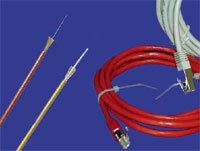In the world of networked audio transport, there are two major categories in which a system may fall: a fully standards-based network, or a proprietary network that may or may not use standards-based transport.
Both have their advantages and disadvantages and, of course, are subject in varying degrees to the problems associated with transforming an analog signal into a digital stream and then back again.
Let’s first explore the biggest question that a system designer should ask when someone shows them a new piece of digital gear: “What is the latency as it relates to audio being transported in large networks?”
Latency, or what some manufacturers call “propagation delay,” is the amount of time that an audio signal is delayed due to digital processes including analog to digital conversions (A/D), digital to analog conversions (D/A), and digital signal processing (DSP).
For live sound applications, excessive amounts of latency can wreak havoc on the audience as well as the performers by creating listener fatigue and poorly reconstructed audio.
Generally speaking, the extent to which latency will cause a problem is a function of the ratio between the direct sound and the sound that is delayed.
In a large-scale sound system, where there is little to no direct sound, the delay does not become a problem until there is a noticeable delay between sight and sound.

However, when the direct sound is within 8 dB or so of the delayed signal, 20 milliseconds (ms) to 30 ms difference will be audible. As for performers on stage, the acceptable time is generally shorter, especially when it comes to their monitors.
Echo from a system – whether it is acoustic or electronic – contributes to performer and audience fatigue.
A performer using an in-ear personal monitoring system will be conscious of any latency in the system to as little as 5 ms to 10 ms.
Small latencies on the order of 100 microseconds (μs) can cause phasing problems that can result in high frequency roll-off when they are added back into the mix with an un-delayed source.















